Tillage, Nitrogen and Foliar Mg Effect on Sugar Beet Yield and Quality

A printable PDF version is available.
Chengci Chen, Magdi Abdelhamid, William Franck, Calla Kowatch-Carlson, Thomas Gross, Ron Brown, and Sooyoung Franck
Eastern Agricultural Research Center, Montana State University, Sidney, MT
INTRODUCTION
Conventional tillage for sugar beet (Beta vulgaris L.) typically involves deep plowing using a ripper or chisel plow, followed by multiple passes of disking, mulching, and leveling to create a finely prepared seedbed to ensure optimal seedling establishment. However, these intensive tillage practices have numerous adverse effects on soils and the environment, including the depletion of soil organic matter, increased soil erosion and fertilizer runoff, and disruption of soil structure and porosity causing surface crusting. Intensive tillage practices also have high fuel use and labor costs. Researchers are exploring the viability of incorporating conservation tillage in sugar beet production to address these challenges.
Soil nitrogen (N) management is critical for optimal sugar beet root yield and sucrose concentration. Inadequate N fertilization hampers root yield, while excessive N can diminish sucrose concentration and elevate impurities in sugar beets. Imbalanced nutrients in the soil, including macro- and micro-nutrients, may also result in lower yield and sucrose concentration of sugar beet. A study was conducted at MSU Eastern Agricultural Research Center to investigate: 1) the optimal N rate and application timing for the maximal root yield and sucrose concentration in both no-till (NT) and conventional tillage (CT), and 2) the potential increase of root yield and sucrose concentration through foliar application of magnesium (Mg) or zinc (Zn).
METHODS
Two field experiments were conducted in 2019 and 2020 in Sidney, MT, using a sprinkler irrigation system. The soil at the experimental site is characterized as deep, well-drained, and nearly level Savage clay loam. Initial composite soil samples were collected to assess the soil fertility status (Table 1). Over the period from April to September, the site received 10.4 inches of precipitation and 9.8 inches of irrigation water from planting to harvesting in 2019, while from April to September 2020, the site received 5.8 inches of rainfall and 13.2 inches of irrigation water. Sugar beets were planted following spring wheat.
The sugar beet variety Crystal S696 GEM 100 was seeded with a no-till beet-planter in both years. In 2019, sugar beet was planted April 24 and harvested September 24. In 2020, sugar beet was sown April 22, replanted May 1 due to frost damage, and harvested September 21.
The main treatments were tillage, i.e. no-till (NT) and conventional tillage (CT), with two fertilizer-N application times: spring application in April and fall application the previous October. Within each tillage and fertilizer application timing, we used three N rates (120, 160, and 200 lb N/acre) with and without foliar applications of Mg and Zn. Chelated EDTA-Mg (1.0 lb Mg/acre) and EDTA-Zn (0.8 lb Zn/acre) were applied once at the 8-10 leaf stage. Fertilizer-P application was based on soil tests (Table 1) and Montana State University’s recommended guidelines.
|
Year
|
Tillage
|
pH
|
OM (%) |
NO3-N (lb/acre) |
P - Olsen (ppm) |
K
|
Mg
|
Zn
|
Ca (ppm) |
Na
|
Fe
|
Mn
|
Cu
|
|---|---|---|---|---|---|---|---|---|---|---|---|---|---|
|
2019
|
NT
|
8.3
|
3.3
|
32
|
15
|
351
|
614
|
0.54
|
6209
|
156
|
8.5
|
5.74
|
1.33
|
|
CT
|
8.2
|
3.7
|
38
|
17
|
431
|
615
|
0.57
|
6050
|
148
|
8.1
|
6.08
|
1.18
|
|
|
2020
|
NT
|
7.9
|
1.9
|
42
|
21
|
162
|
-1.
|
-
|
-
|
-
|
-
|
-
|
-
|
|
CT
|
7.9
|
1.8
|
42
|
21
|
162
|
-
|
-
|
-
|
-
|
-
|
-
|
-
|
|
|
1. Mg, micronutrients and CEC were not measured in 2020.
|
|||||||||||||
RESULTS
Root yield was higher in NT than CT in 2019, and not different between NT and CT in 2020 (Fig. 1A). Tillage did not affect root sucrose concentration, impurity, and sucrose loss to molasses (SLM; Fig. 1BCD).
Spring application of N produced 6.6 tons/acre more root than fall application in 2020, yet there was no yield difference between fertilizer application timing in 2019 (Fig. 2A). The N application timing did not affect sucrose concentration, impurity or SLM (Fig. 2BCD).
The effect of N rate, Mg and Zn on root yield and quality is presented in Table 2. There was a trend of fertilizer-N application increasing sugar beet root yield both in 2019 and in 2020, and the root yield plateaued at 160 lb N/acre. Sucrose concentration decreased with increasing N rate. Foliar application of Mg consistently increased root yield, but slightly decreased sucrose concentration. When averaged across N rates, chelated Mg increased yield and decreased sucrose in 2019 (data not shown), but had no effect in 2020. Zn did not increase root yield or sucrose concentration.
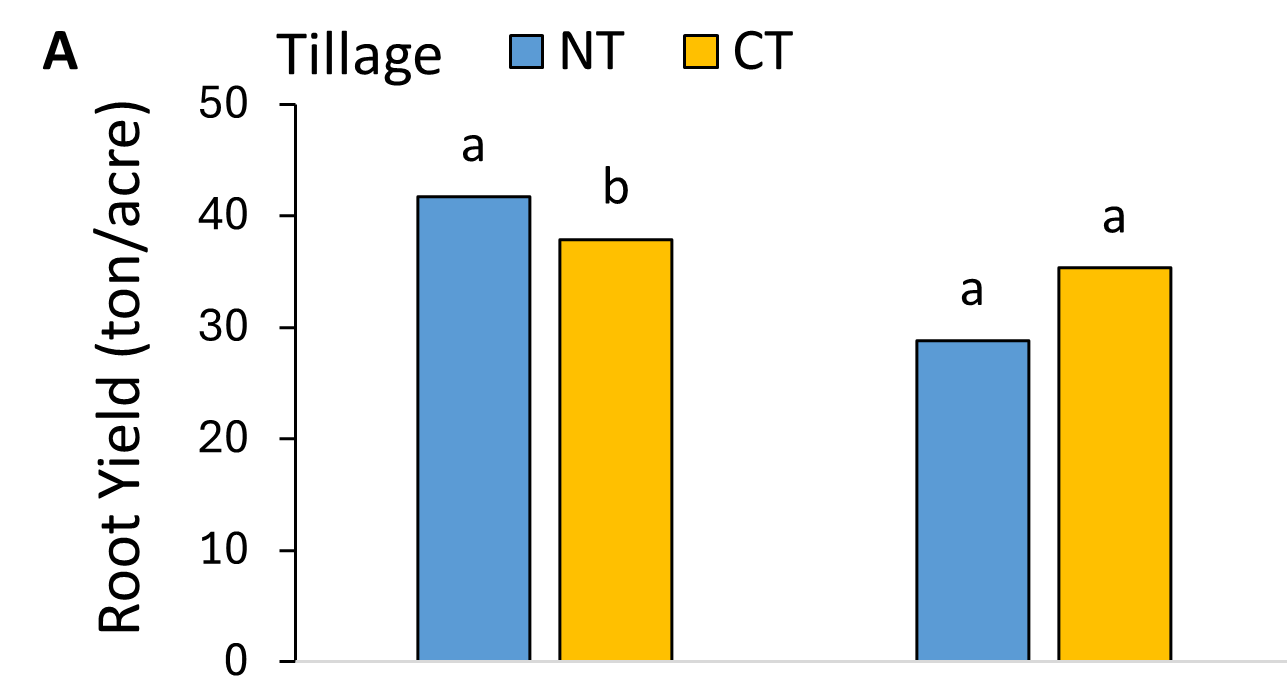
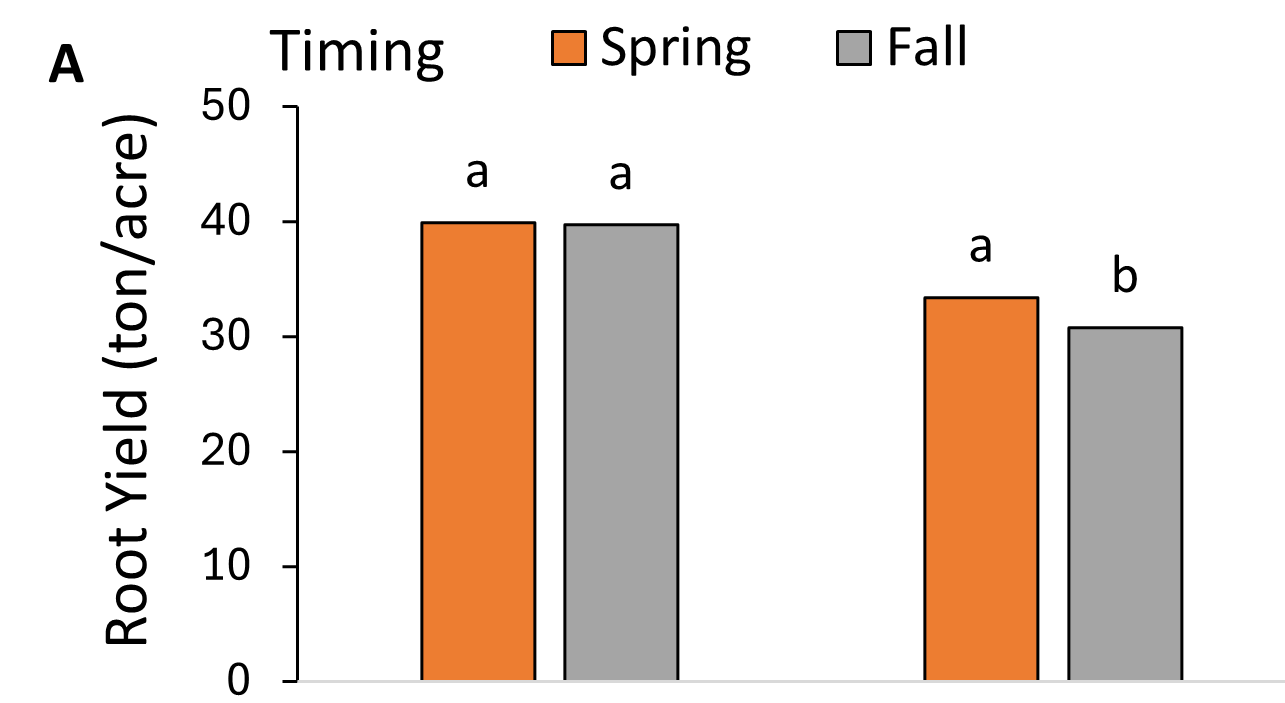
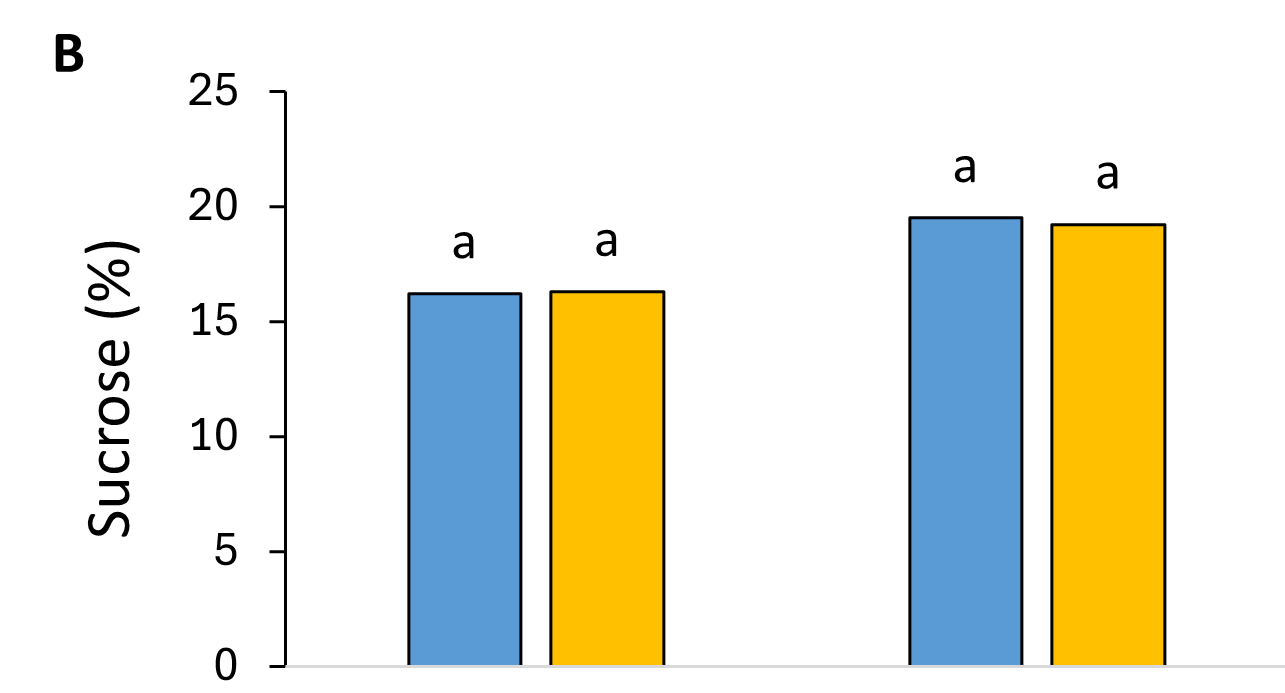
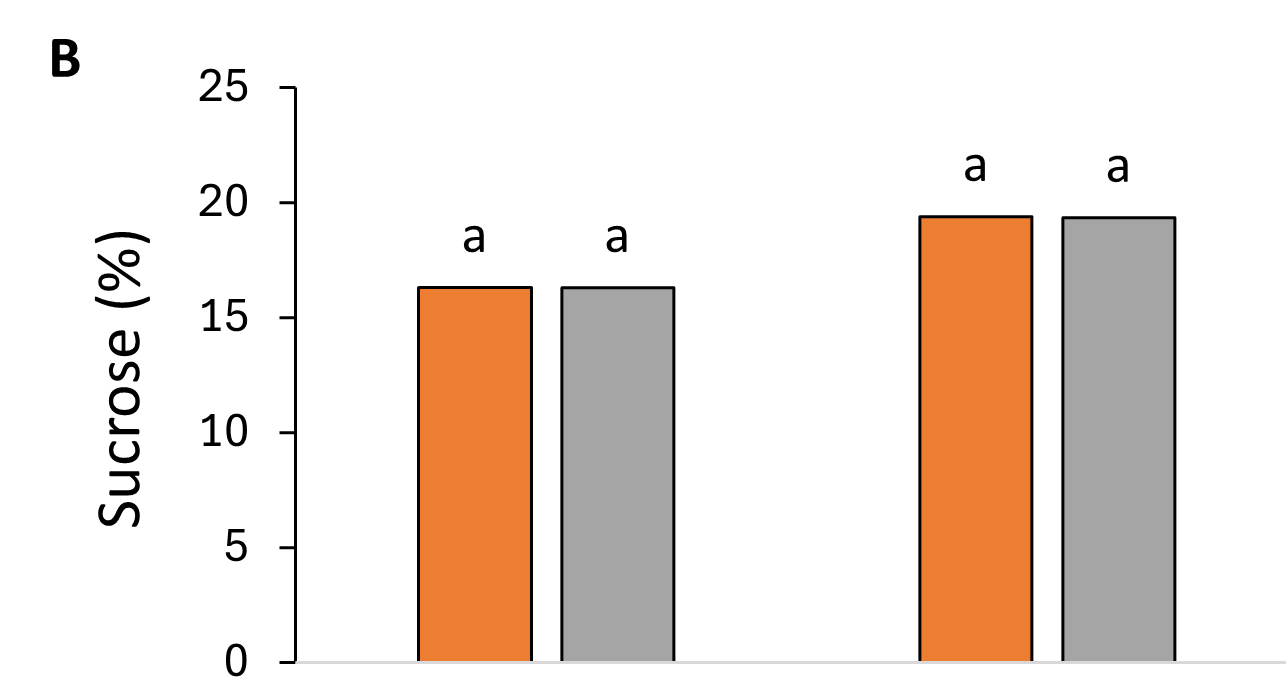
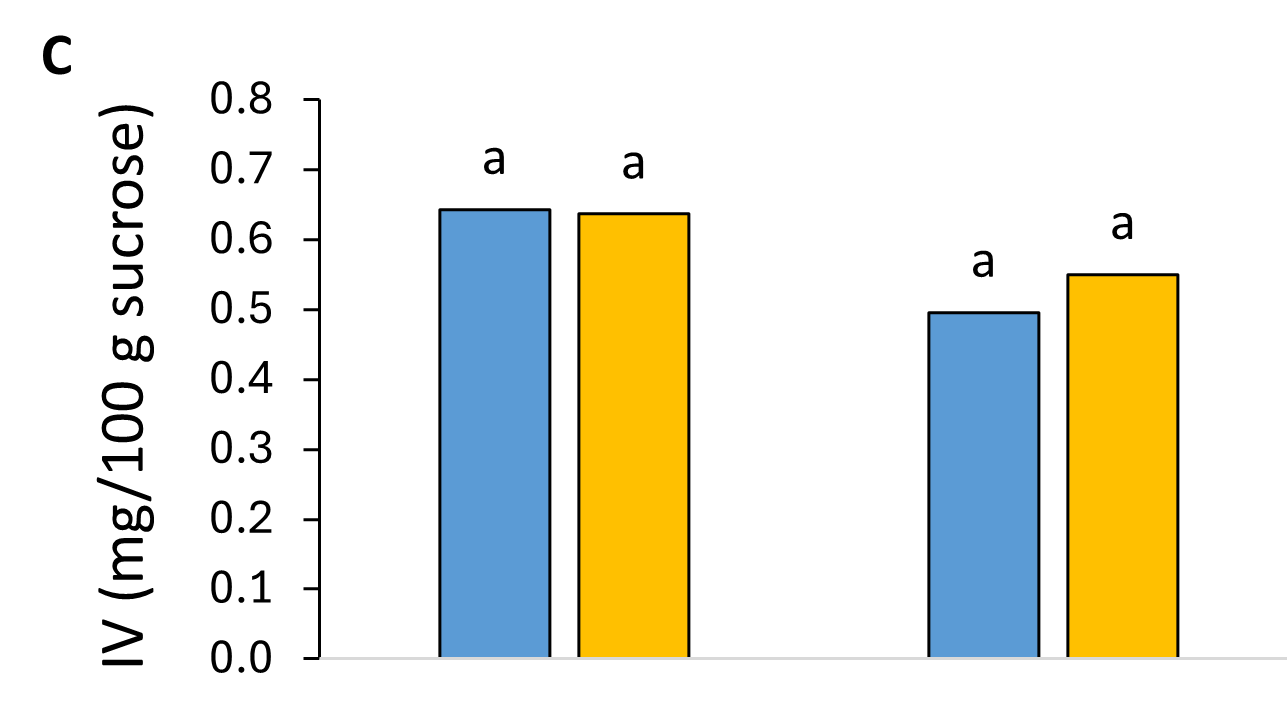
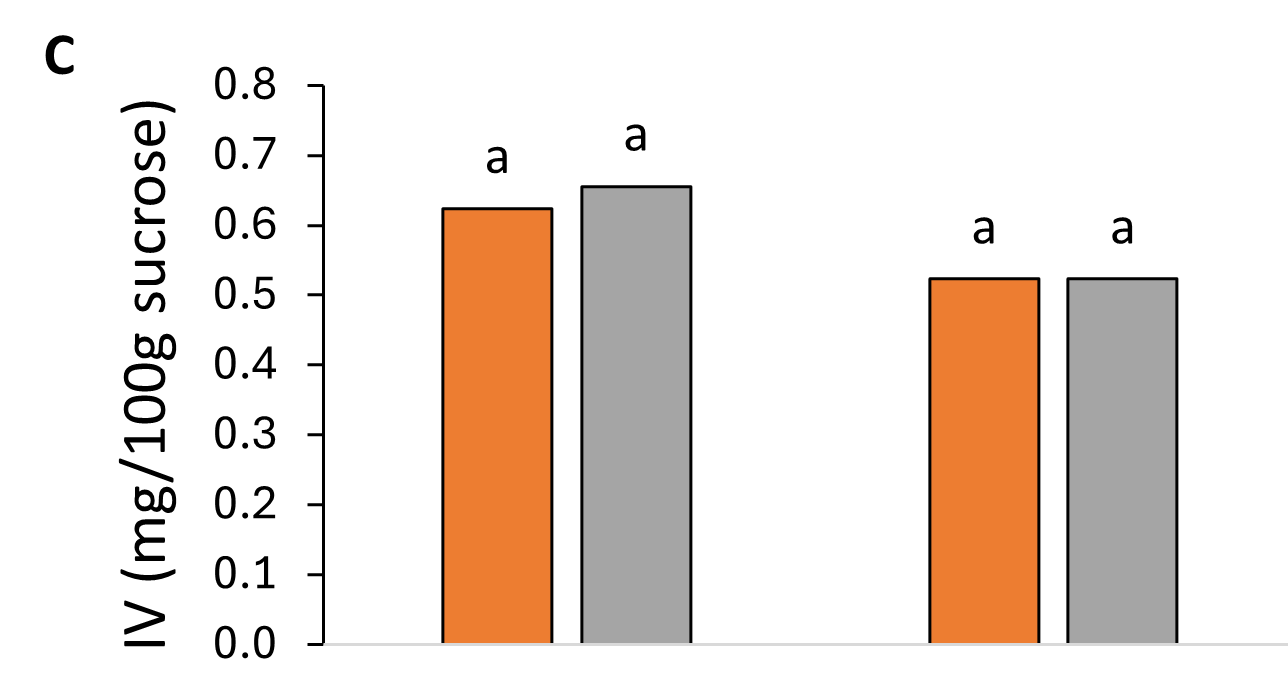
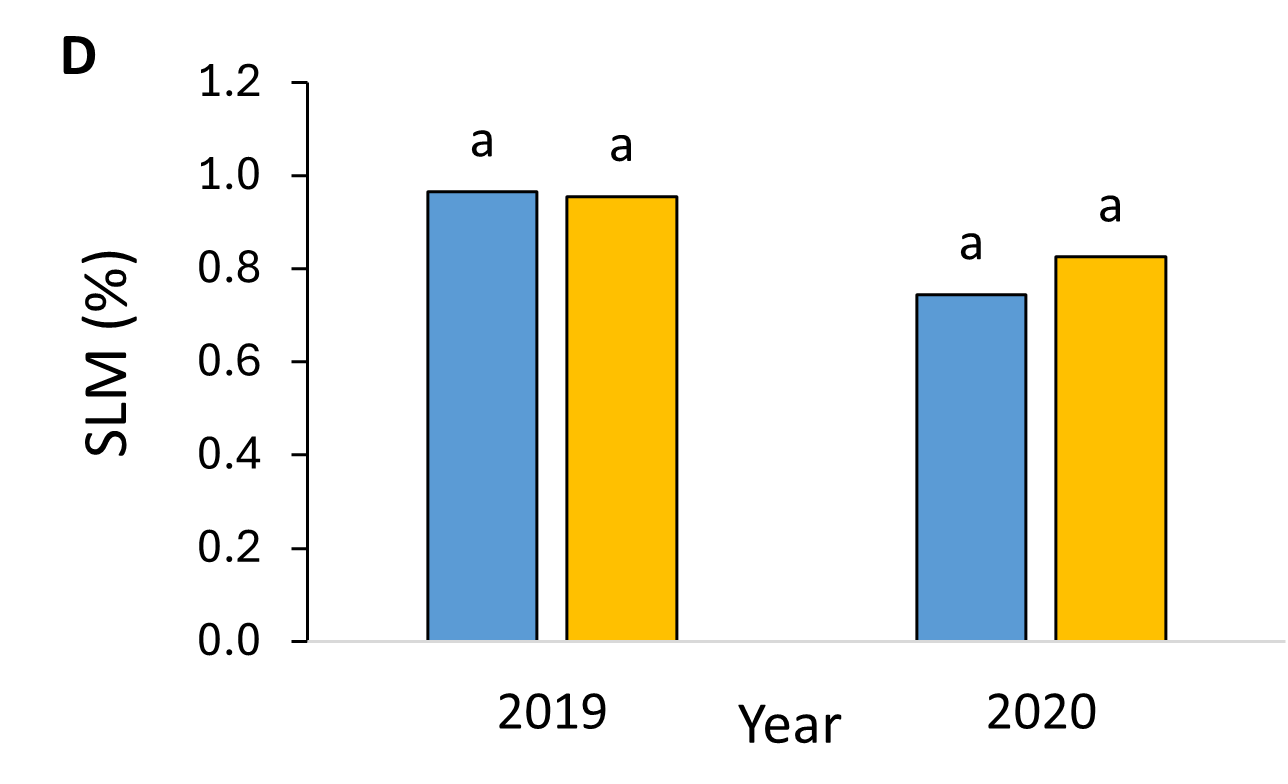
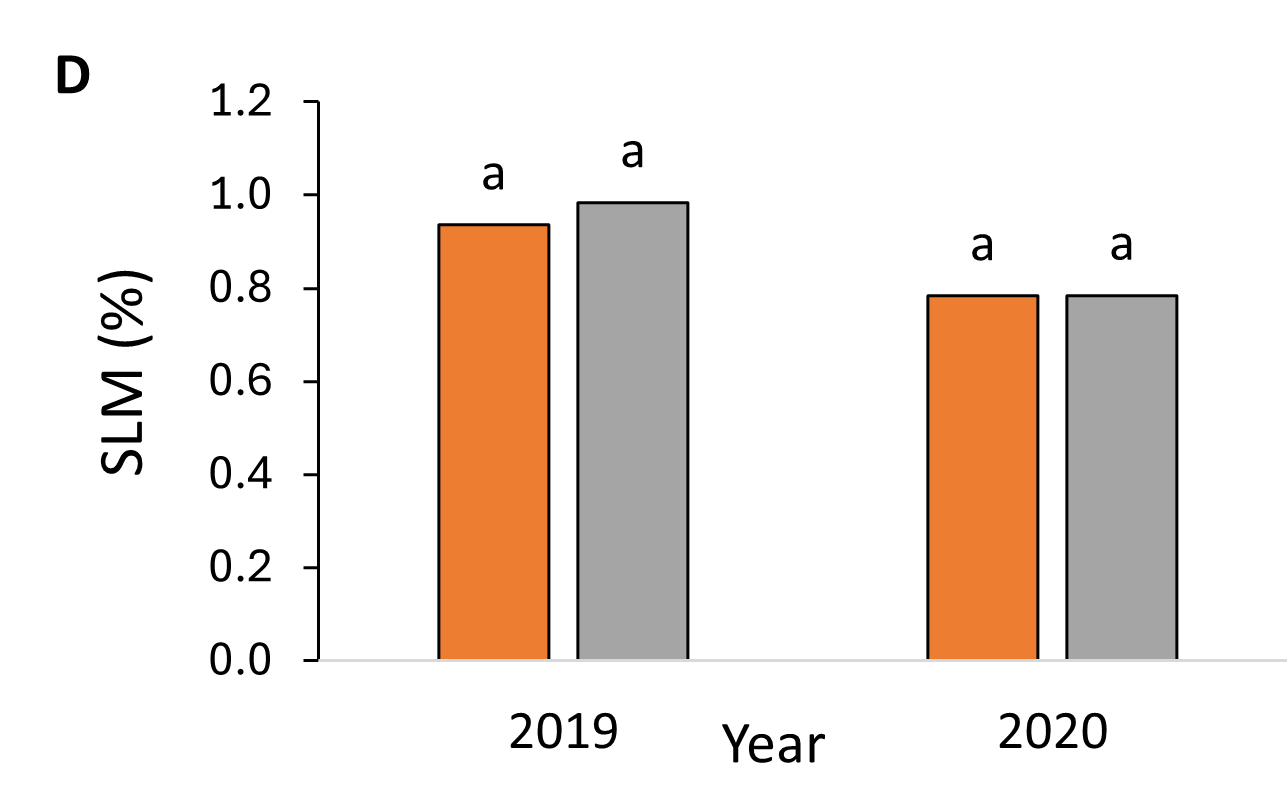
Figure 1. Tillage effect on sugar beet root yield (A), sucrose concentration (B), impurity value (IV, C), and sucrose loss to molasses (SLM, D). Bars with the same letter in the same figure and year are equal with 95% probability.
Figure 2. Nitrogen application timing effect on sugar beet root yield (A), sucrose concentration (B), impurity value (IV, C), and sucrose loss to molasses (SLM, D). Bars with the same letter in the same figure and year are equal with 95% probability.
|
Treatment
|
Root yield (ton/acre) |
Sucrose (%) |
Impurity value (mg/100g sucrose) |
SLM1 (%) |
|---|---|---|---|---|
|
N120
|
34.2 c2
|
18.4 a
|
0.526 d
|
0.788 d
|
|
N120+Mg
|
34.7 bc
|
17.9 bc
|
0.552 cd
|
0.828 cd
|
|
N120+Zn
|
34.3 c
|
18.0 ab
|
0.557 cd
|
0.835 cd
|
|
N160
|
36.8 abc
|
17.9 b
|
0.589 abc
|
0.883 abc
|
|
N160+Mg
|
38.0 a
|
17.5 d
|
0.589 abc
|
0.884 abc
|
|
N160+Zn
|
35.9 abc
|
17.8 bcd
|
0.597 abc
|
0.896 abc
|
|
N200
|
36.5 abc
|
17.8 bcd
|
0.630 a
|
0.945 a
|
|
N200+Mg
|
37.8 a
|
17.5 d
|
0.614 ab
|
0.920 ab
|
|
N200+Zn
|
37.2 ab
|
17.7 bcd
|
0.576 bc
|
0.864 bc
|
|
1SLM Sucrose loss to molasses
|
||||
|
2Values within the same column with at least one letter in common are equal with 95%
probability.
|
||||
FERTILIZER FACTS
- No-till planting can achieve similar root yield and sucrose concentration if seedlings can be successfully established in no-till planting.
- No-till sugar beet requires similar N rates as conventional tillage.
- Spring application of N produced higher root yield than fall application in 2020,
but there was no
difference in 2019. - Root yield increased, but sucrose concentration decreased, with increased N input.
- The optimum N rate is around 160 lbs N/ac considering root yield, sucrose concentration, and economics.
- Foliar application of 1.0 lb Mg/ac increased sugar beet root yield in one year but not the other.
ACKNOWLEDGEMENTS
This project was funded by the Montana Fertilizer Advisory Committee and Montana Agricultural Experiment Station.
Edited by Clain Jones, MSU Extension Soil Fertility Specialist, and Kathrin Olson-Rutz, Research Associate
posted December 2024
